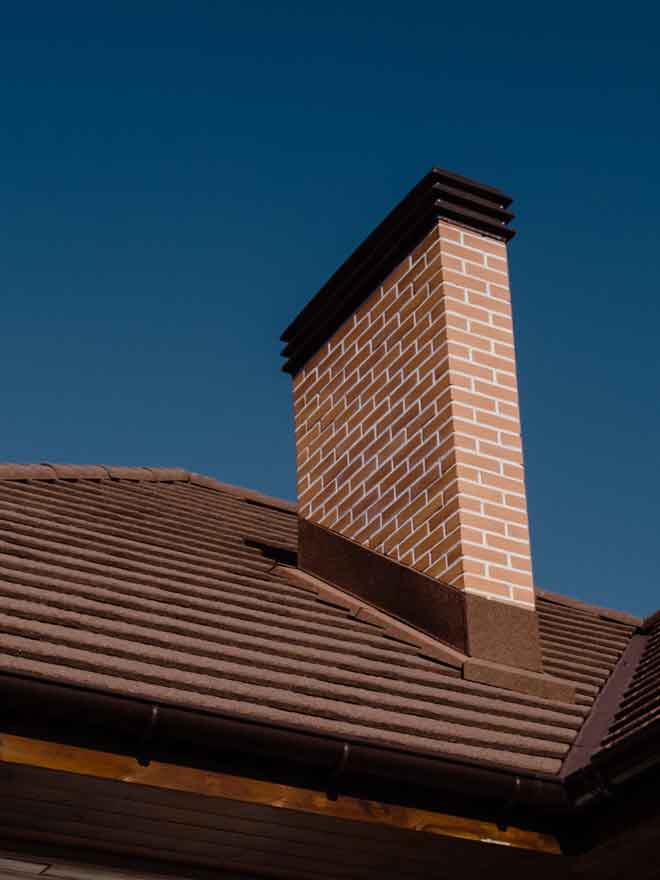
Chimney flashing usually consists of 2 components, base and counter flashing. Base flashing, as it sounds, is sheet metal installed at the base of the chimney that connects the walls of a chimney with the roof. Base flashing can be very problematic if the workmanship is sloppy. To install base flashing properly, whoever is installing it must use common sense and know how water is likely to run, or it could be an easy source of leaks. Unfortunately, leaks created by poorly installed base flashing are very common.
Counter flashing serves as a cap over the base flashing. We often encounter loose counter flashing that is not attached to the chimney wall or sealed correctly. Fortunately, penetrations and leaks in counter flashing are easy to spot and fix as counter flashing is visible. To fix it, it must be inserted into cut grooves in the mortar and then sealed with quality roofing cement or sealant.
Chimney Cap Repair
Chimney caps reduce moisture, keep animals out, block downdrafts, prevent flues from getting blocked with debris, and stop sparks from lighting your roof on fire. However, the chimney cap should be securely installed. There are many types of chimney caps, and a professional needs to make sure that they will stay in place even in high winds. If not secure, water can penetrate around the base and leak into the chimney or roof.




